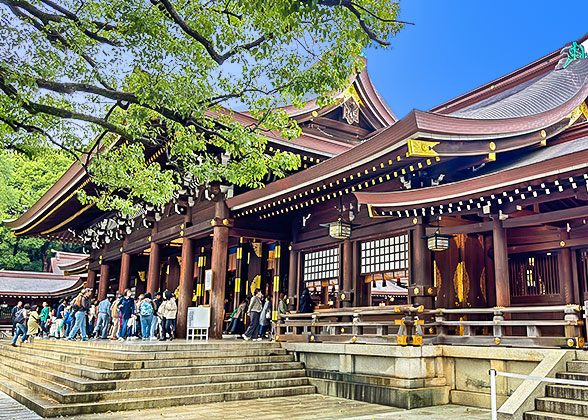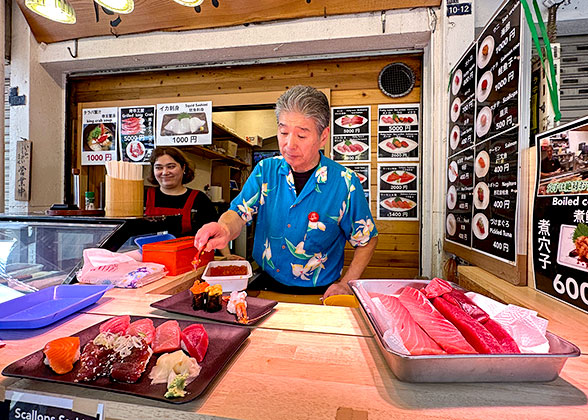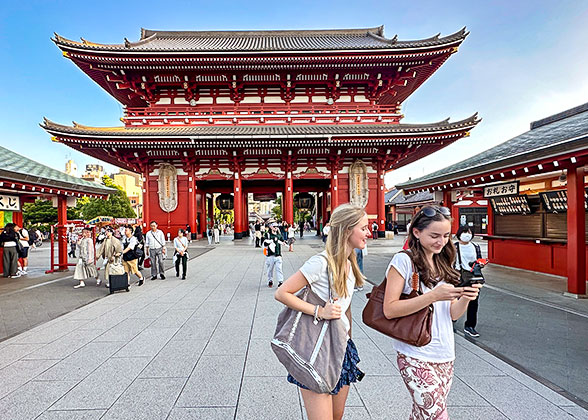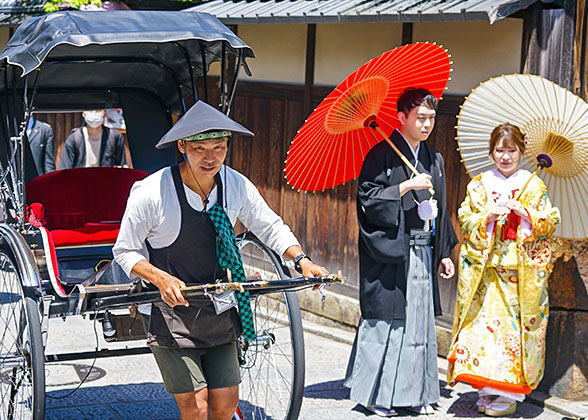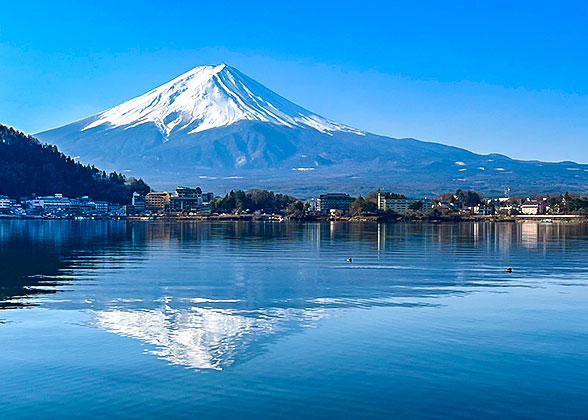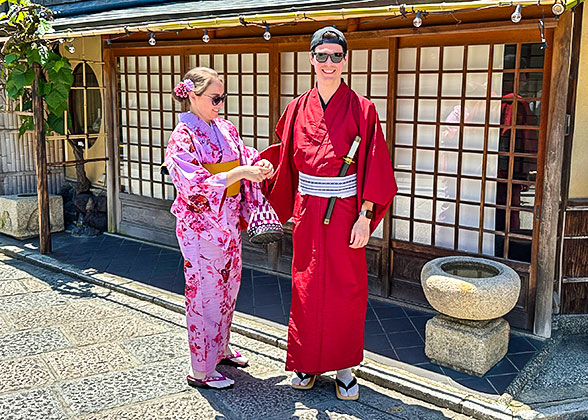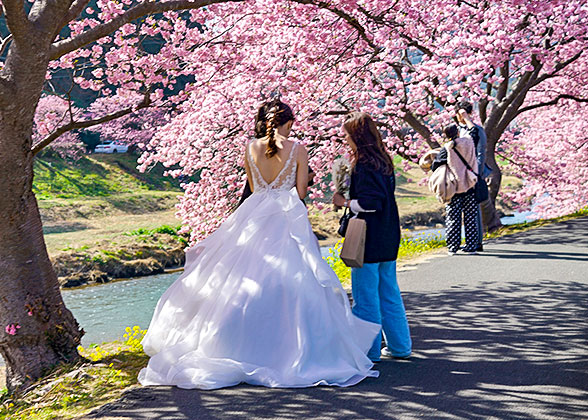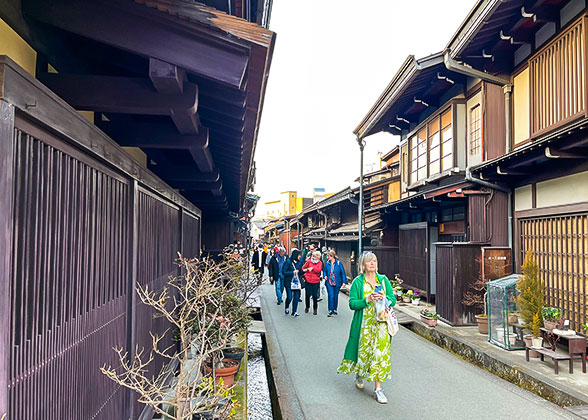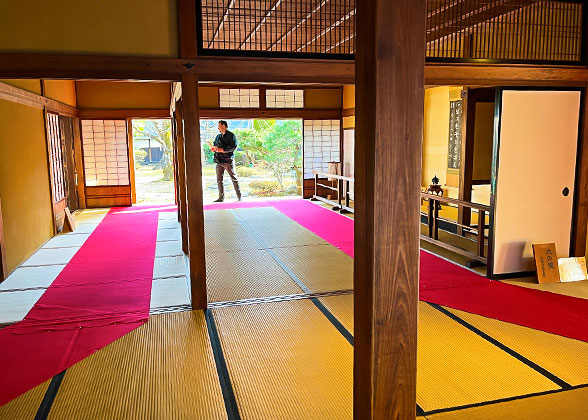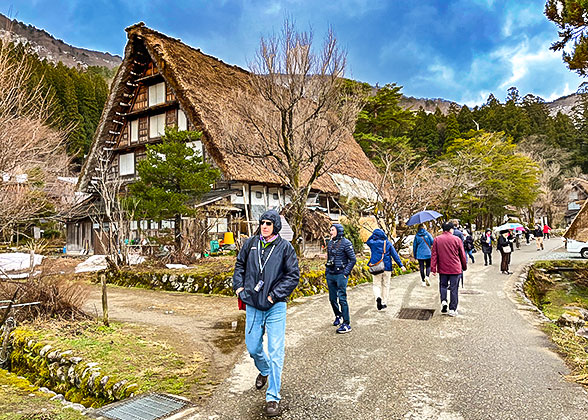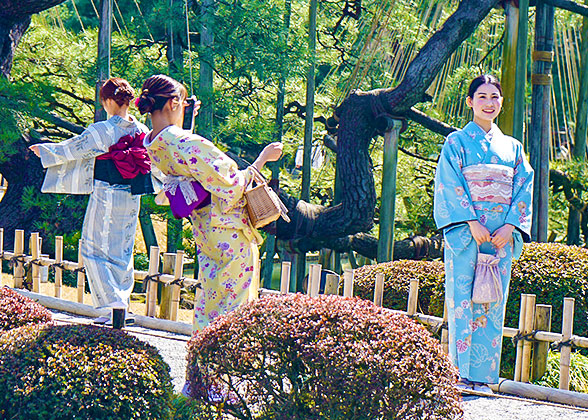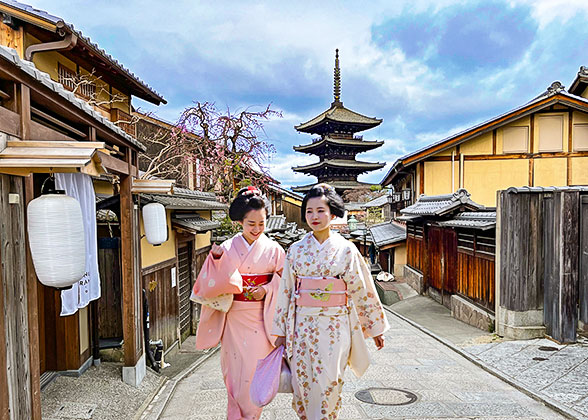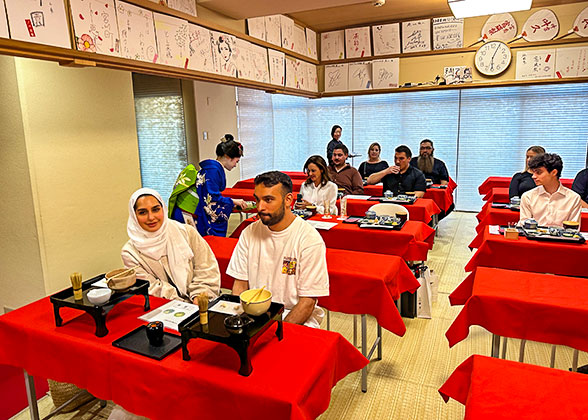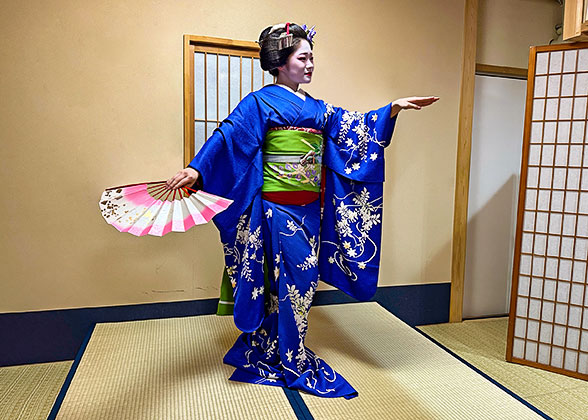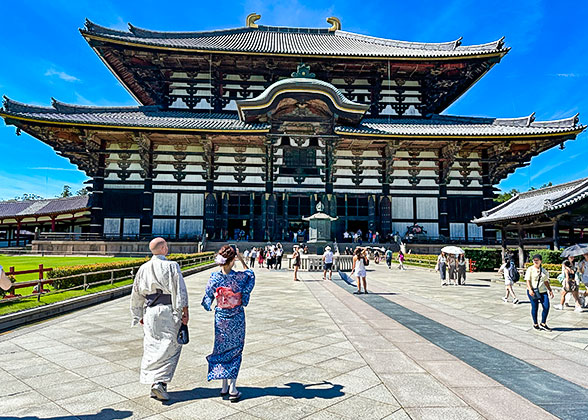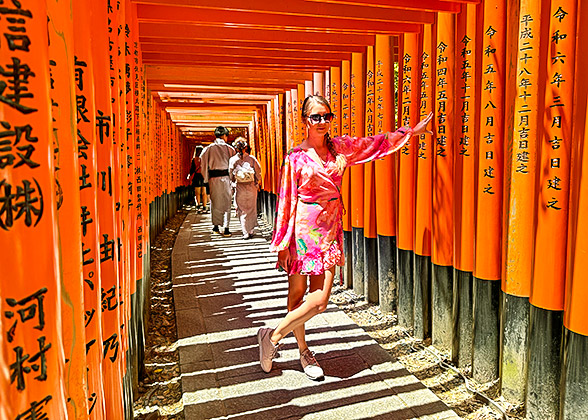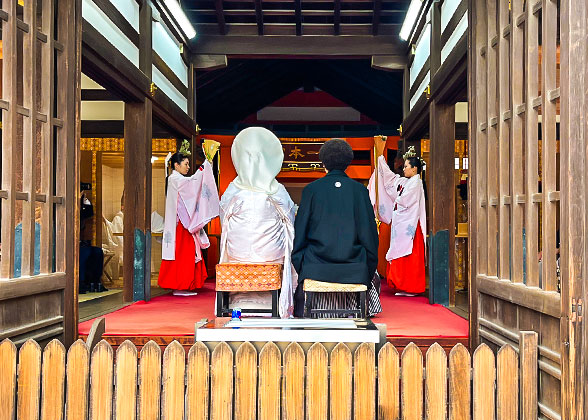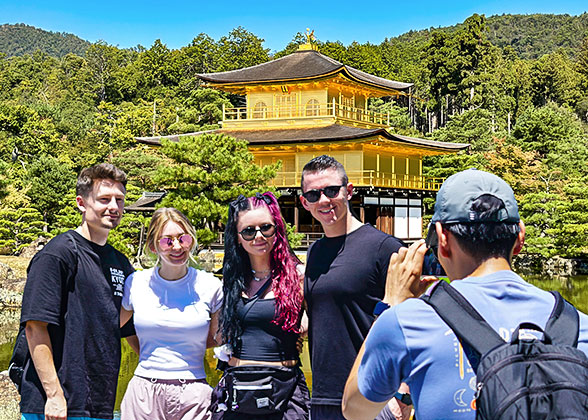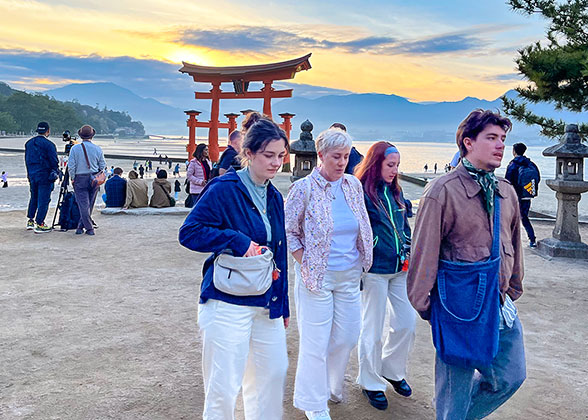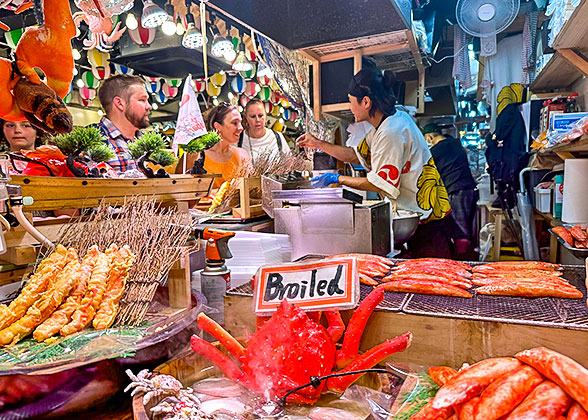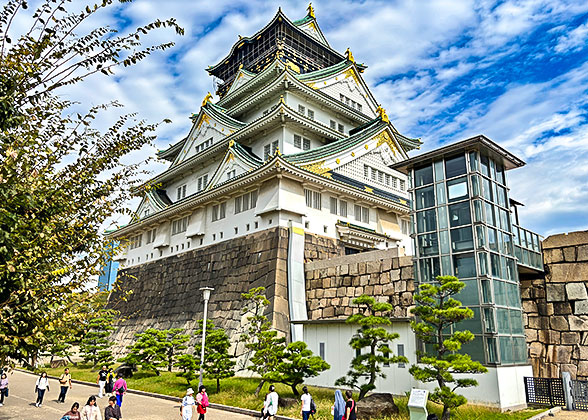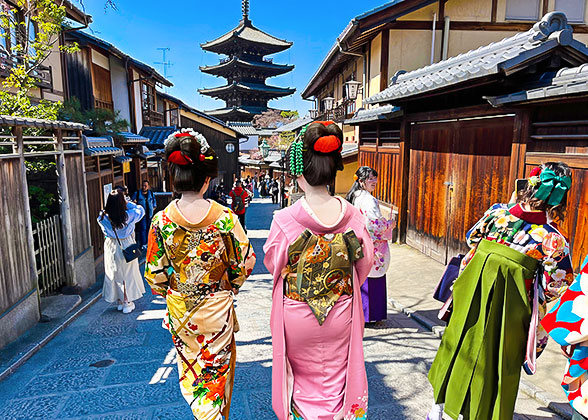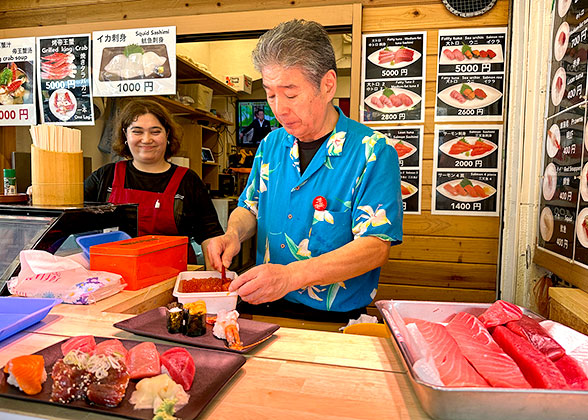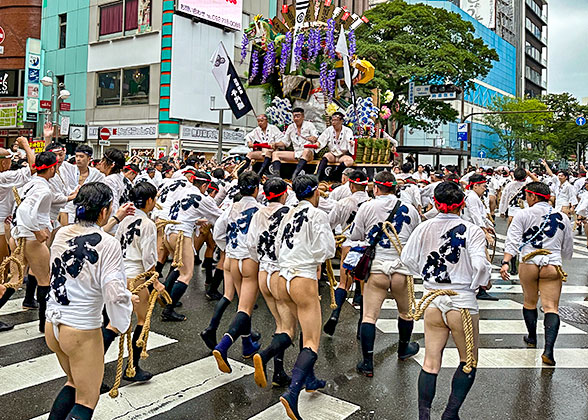Day 1: Arrive in Tokyo; Airport Pick-up
Welcome to take our Japan private tour, with all details tailorable! When you arrive at the Narita or Haneda Airport, our English-speaking assistant will guide you to a shared shuttle that will take you directly to your hotel in Shinjuku of Tokyo. Check in and enjoy a good rest to recover from your long flight.
Accommodation: Hotel Century Southern Tower (4 stars) in Tokyo
★ Tips from Insiders:
1. Airport-to-Hotel Transfer: We offer a convenient and economical shared car for you. You can also upgrade to a private car for a fee, or take the Airport Limousine Bus or taxi to the hotel on your own. The choice is yours.
2. Expert-chosen Hotel with Care: Why do many travel agencies choose to stay in Ginza while we recommend staying in Shinjuku. The high prices of Shinjuku hotels would add to our costs, but we stick with it because we know it would be the most convenient place for tourists – a 1-minute walk to subway entrance to Shinjuku transportation hub, a vibrant nightlife offered by Kabukicho and Omoide Yokocho which are a 10-minute walk north, and the hotel’s direct access to the opposite malls of Takashimaya Times Square and Hands Shinjuku for quick meals and shopping. Everything you need is right at your fingertips!
|
Day 2: Tokyo: Meiji Jingu Shrine, Imperial Palace, Senso-ji Temple, Sumida Cruise
After breakfast at the hotel, our guide will pick you up from the lobby and accompany you on a tour of downtown Tokyo’s top attractions using the convenient public transport system. ► Good to Know: 1. Our guide will give you a transit pass, which you can use throughout the day, even if you want to take the rail transit on your own after the guide leaves in the evening. 2. Be sure to wear comfortable shoes, as there is a lot of walking involved in this tour. Some attractions in Japan have large protected areas and many gravel roads. Our first stop today is the Meiji Jingu Shrine, an important Shinto shrine dedicated to Japan’s beloved Emperor Meiji (1852 – 1912 AD) and his empress. Walking into the main hall surrounded by dense forest, you will be amazed at how much green space is hidden in the heart of the city. The saintly atmosphere and the love story of the emperor and his wife have made it a popular venue for traditional weddings. You are likely to encounter a Shinto wedding and also a culture shock, as it would differ greatly from what you are used to - quiet and solemn, with no one talking or laughing. Only the wealthy or prestigious can afford to hold a wedding here, for a small ceremony costs at least USD 25,000! Next, we’ll head to the Imperial Palace, the residence of the Emperor of Japan, to visit the Kokyo Gaien National Garden, the large East Gardens, and the most photogenic Nijubashi Bridge. The Imperial Palace has a large area, but most of it is covered in gardens and green spaces, and the buildings are few and simple, because the Emperors of Japan had no power for a long time, and the power fell to the shogunate. Without the power to collect taxes, how could they build massive buildings? At noon, we will visit the Senso-ji Temple, the oldest temple in Tokyo. Enter through the iconic Kaminarimon Gate, stroll down the buzzy Nakamise-dori Street lined with small shops selling souvenirs and snacks, and you’ll find that Senso-ji has made the entire Asakusa area a popular playground and big bazaar, unlike the stately Buddhist temples you might imagine. In addition to its quaint architecture, get to know the Senso-ji Temple from different perspectives with our expert guide: 1. Bright Colors: Different from dark and serious Buddhist sites, Japanese temples feature vermilion with high saturation, which has a strong visual impact and forms a lively atmosphere. 2. Entertaining Omikuji: There are Omikuji grids on both sides in front of the main hall, and many tourists will spend JPY 100 to draw an Omikuji slip, but don’t take it seriously. It’s just a fun way to try your luck, or let’s put it bluntly, a way for making money. After all, the temple receives 100,000 visitors a day! 3. Rickshaw Experience (at your own expense): Take a short ride around the small alleyways next to the temple, including a good view of the Tokyo Skytree. ★ Bonus: Sumida River CruiseFinally, the guide will escort you to the Asakusa Pier for a Sumida River Cruise, which will show you a different side of Tokyo: a city of water. During the 50-minute journey from Asakusa to Odaiba, you’ll enjoy the gorgeous cityscape of central Tokyo, including the Skytree, Tokyo Tower, Tokyo Bay, and various bridges like Kiyosu Bridge, Chuo-Ohashi Bridge, and Rainbow Bridge. Once ashore, if there is time, the guide will accompany you on a walk along the Odaiba Marine Park and visit a miniature Statue of Liberty before returning to your hotel. ► Recommended Restaurant for Dinner (at your own expense): Premium Sake Pub GASHUE, located southeast to Ueno station somewhat and northeast to Naka-Okachimachi metro station, is a praised izakaya open for lunch and dinner on weekdays, while at 16:00-23:00 on Saturdays. It’s closed on Sundays. Fresh sashimi, Koji miso namerou, pork steak in lees, potato salad, etc. are the top picks there, most of which are perfect to go with wines. Japanese sakes, cocktails, tea, juices and more drinks are also on offer. Average Cost per Person: JPY 4,000-5,000 (USD 25-32) Address: 2 Chome-13-5 Higashiueno, Taito City, Tokyo 110-0015 Meals: Breakfast Accommodation: Hotel Century Southern Tower (4 stars) in Tokyo
|
Day 3: Mt. Fuji & Lake Kawaguchi
Meet our guide at the hotel lobby, and then we’ll get to the Shinjuku Expressway Bus Terminal to take an express bus for 2 hours to the Lake Kawaguchi, right at the foot of Mt. Fuji. You will take the Lake Kawaguchi cruise and Mount Fuji Panorama Ropeway to see the mountain from different angles, and the guide will arrange the specific order according to the flow of people and waiting time. Board a corsair-style ship and embark on a 20-minute cruise, breathing in the cool, fresh air while taking in the elegant Mount Fuji from an unobstructed perspective. Take the ropeway to ascend the slopes of Mount Tenjo, which offers a platform with thrilling panoramic views of Mount Fuji and Lake Kawaguchi. Visit the mini Rabbit Shrine here, take photos with the statues of a tanuki and a rabbit, and learn about a captivating legend behind them – a tanuki stole sweet potatos grown by an old couple, and the old man caught the theft and hung it on the beam as punishment. When the old man went out, the compassionate old woman release the tanuki. However, the tanuki, driven by resentment, killed the old woman, made her remains into a stew, and ran away. The old couple's loyal friend, a rabbit, used his wisdom to devise a trap, set fire to the wood on the tanuki’s back, and avenged the old woman. Supplement: Arakurayama Sengen ParkIf time permits, we would add the Arakurayama Sengen Park for you during cherry blossom season or red leaf season. Here, you can photograph the classic scene of Mt. Fuji and the five-storied Chureito Pagoda together. Completing the visit, our guide will escort you to return by express bus to Tokyo for the night. Tips from Our Experts:1. Dress Warm: Windproof clothing is recommended, as the wind is strong in the mountain and lake area, and the temperature is also 5 to 10 degrees lower than downtown Tokyo. 2. Food: There is a teahouse on the observation platform of the Mount Tenjo offering Dango (rice balls) and ice cream. You can also bring some portable snacks for lunch energy supplement. ★ Our Unique Service: Adjustable Day to Visit Mt. FujiMt. Fuji is often shrouded in clouds due to the abundant moisture, earning it the reputation of the ‘shy maiden’, which can be seen only 80 days a year. To maximize your chances of seeing the mountain, we offer an exclusive date change service. Please pay close attention to the weather forecast, discuss with our guide in time to adjust the order of your itinerary, and swap today’s Mt. Fuji visit with Day 2’s Tokyo city tour if needed. ► Things to Know: 1. Just let us know whether you prefer a fixed date or a flexible date to visit Mt. Fuji. For a flexible date, the round-trip direct express bus is not available as the bus tickets need to be booked one month in advance. This option requires some patience - a 2 to 3 hours’ non-reserved train ride with a transfer and possibly no seats. 2. You can choose to visit the Mt. Fuji on any day of your stay in Tokyo, allowing for the best weather for the big day. However, please understand that even if you change the date, you may still not be able to see the mountain due to the changeable weather. Meals: Breakfast Accommodation: Hotel Century Southern Tower (4 stars) in Toky
|
Day 4: Tokyo to Takayama: Visit Sanmachi Suji & Takayama Jinya
Shinjuku Railway Station in Tokyo Today, you will take the bullet train leaving the metropolis Tokyo for Takayama. ► Our Promise: Train Tickets with Reserved Seats Included Trains in Japan offer reserved seats and non-reserved seats. Travelers with non-reserved seats need to find an available seat in a non-reserved carriage, and are not guaranteed a seat, while holding a reserved seat ticket, you can secure a seat with a fixed number in a fixed carriage. Although reserved seats require advance booking and incur a higher cost, we prioritize your comfort and convenience by arranging reserved seats for you, even if we would bear higher price escalation during the peak season. ► Take the Train from Tokyo to Takayama on Your Own: Please check out and leave 40 minutes before the train’s departure time. Take either the Chuo Line or Marunouchi Line from Shinjuku Station for 20 minutes to Tokyo Station, or take a taxi to get there in 20 minutes. Board the Tokaido-Sanyo bullet train for an impressive 1.5-hour super-speed experience to Nagoya. Transfer to Hida Line, and ride for another 2.5 hours to Takayama. Visit Takayama Landmarks & MonumentsOur guide will greet you at the Takayama Station and accompany you to drop off your luggage in the hotel. Then it’s time to explore this charming city nestled amidst the Japanese Alps. First, we’ll visit the Sanmachi Suji District in the Takayama Old Town. The quaint neighborhood of Furui Machinami Old Street preserves a primitive throwback to the Edo Period (1603 – 1868 AD) and the roads are lined with traditional wooden houses, restaurants, cafes, and sake breweries. Pass the Nakabashi Bridge, and then step back in time at the Takayama Jinya (Old Governor's House) and Takayama Showa Kan Museum. The final stop will be the Hida Kokubunji Temple, which features lucky Sarubobo dolls blessing a harmonious marriage and healthy children. In the evening, the guide will accompany you back to the hotel. Sanmachi Suji Takayama Jinya
Dinner Recommendation: Try Takayama’s Culinary Gem – Hida Beef (at your own expense) The restaurant Shikinogochiso Mitsuiwa featuring the best Hida beef is worth trying. Hida Beef is a highly regarded brand of wagyu beef in Gifu region of central Japan. Here, you could taste the finest quality beef, with perfect marbling, bright color, tender texture and fresh aroma. Enjoy the distinctive smooth and slightly sweet taste. Average Cost per Person: JPY 5,000-8,000 (USD 32-50) Address: 1 Chome-14-6 Hanaokamachi, Takayama, Gifu 506-0009 Meals: Breakfast Accommodation: Takayama Green Hotel (4 stars)
|
Day 5: Admire Shirakawa-go; Transfer to Kanazawa to Visit Kenroku-en Garden
Takayama to Shirakawa-go: A Journey into TraditionAfter breakfast, our guide will pick you up from the hotel lobby for a scenic bus ride to Shirakawa-go. In about 1 hour, we will arrive at this fairy-tale village surrounded by mountains and rice paddies. Best known for its traditional farmhouses in a building style known as gassho-zukuri, Shirakawa-go was declared a UNESCO World Heritage site in 1995. Visit the Wada House to have a glimpse into the utensils and lifestyle of the villagers in the past. Climb up to the Ogimachi Castle Observation Deck and look down on the entire village, and you will be amazed by its quietness and peace, especially in winter. In January and February, don’t miss the winter illumination, when the 100 or so snow-covered thatched huts are adorned with warm lights, creating an ethereal scene you might have seen in landscape shots. Shirakawa-go Village Kenroku-en Garden
Around noon, we’ll take a 1.5-hour bus ride to Kanazawa. Upon arrival, our guide will take you to check into the hotel, and then visit the Kenroku-en Garden, which is also known as the Six Attributes Garden, because it meets the 6 essential qualities of a perfect garden proposed by China’s Song Dynasty poet Li Gefei (1045 – 1105 AD) - spaciousness, tranquility, human ingenuity, antiquity, waterscape, and vista. Take a leisurely walk with our guide in this typical wraparound garden centered on a pond, and admire the exquisite pavilions. From here, we’ll walk all the way to the Kanazawa Castle Park to learn about the city’s feudal past, and later have time spent at the Higashichaya Old Town (geisha district) and Nagamachi Samurai District, both of which are steeped in history and culture. Finally, return to the hotel with our guide. Meals: Breakfast Accommodation: ANA Crowne Plaza Kanazawa (4 stars)
|
Day 6: Kanazawa to Kyoto: Pure Water Temple, Gion, Tea Ceremony with Maiko
We will reserve the train tickets to Kyoto for you in advance. Please check out and walk 4 minutes north to Kanazawa Station, where you will take the train for about 2 hours to Kyoto, with a transfer at Tsuruga – 40-minute bullet train Hokuriku Line from Kanazawa to Tsuruga first, transfer by escalator or elevator from 3F to 1F to find the platform for the express train Thunderbird for another 1 hour ride to Kyoto.
Walking Tour of Pure Water Temple & Gion Geisha District
Upon arrival, our local guide will meet you at the Kyoto Station and lead you to the hotel. See the magnificent Kyoto Tower just outside the train station, and then we’ll have an afternoon tour to Gion, a renowned geisha district offering unique cultural experiences and scenic trails. Leisurely walk through the Gion Street, venture to the Yasaka Shrine at the end of the street, appreciate its Buden Stage hung with lanterns, and make a pious wish at the Utsukushigozen Shrine inside, which is said to improve one’s appearance. Follow the guide as you plunge into the retro Higashiyama historic district, and explore the labyrinth of narrow alleys. Take a photo at the landmark five-story Yasaka Pagoda of the Hokan-ji Temple, and then wander from Ninenzaka to Sannenzaka, where the wooden buildings and traditional shops would evoke the familiar feel of a typical ancient Japanese capital. Be especially aware of the flagstone ramps and stepped roads here, as it is said that a fall here will result in three years of bad luck; but don’t worry, folklore has it that finding a store that sells calabash will break the spell. Eventually, we will climb all the way up to the Pure Water Temple, one of the most revered temples in all of Japan. Perched atop a wooded hill that occupies the commanding heights of Kyoto, it allows you to overlook the roofs and skyline of the old city from its wooden veranda. Pure Water Temple is rather “holy” in the heart of local people, as they believe it’s the merciful Kannon Bodhisattva, the principle image of the temple, who has given peace to Kyoto, a city spared earthquakes in a country located on the active seismic zone. It has remained peaceful for over a thousand years since it was the capital (794 - 1869) to date. Locals usually flock here to pray to the goddess for fertility, and they would tread piously on the Sannenzaka you’ve walked for more blessings on smooth labor and delivery. After enjoying the sunset, we will descend and pass the Hanamikoji Street lined with tea houses, where you may happen to spot a geisha in a kimono and elaborate makeup gliding by in the twilight. Pure Water Temple Sannenzaka Alleyway
★ Expert Photography Tips1. Kimono Experience (optional): Renting a kimono to take photos is a cool thing in Kyoto. Donning a colorful kimono and an elaborate headdress, you will feel like you are stepping into their history and artistic heritage as you walk in the quaint background of the Gion area. 2. Best Photo Spots: Capturing the essence of this bustling area can be challenging, especially amidst the throngs of tourists. With years of experience navigating Kyoto’s hidden corners, our expert guide will show you three extraordinary locations for a perfect shot – Five-Story Pagoda of the Hokan-ji Temple, Shimizu Stage of the Pure Water Temple, and the back lanes. ★ Highlight of Kyoto: Tea Ceremony with MaikoFinally, you’ll be led to a renowned teahouse in Gion. Witness a wonderful tea ceremony with Japanese maiko performance. Savor the delicious sweets and matcha tea, and make your own matcha under the guidance of a maiko. Engage in conversations with the maikos and learn about their traditions. Trained in the traditional Japanese arts from an early age, the maikos and geishas attract guests with their grace and charm. Despite their beauty, their lives often feature solitude and societal misconceptions. Their professional obligations restrict them from marrying. They need to maintain a ‘pure’ image and face very high fines if they are found to have boyfriends or secret marriages. A few of them may find love and prosperity after retiring in their 30s, but many have little prospect of marriage and continue to work, but must be downgraded to serve only as a foil to the younger geishas. When saying goodbye, the maiko will give you a Senjafuda as a gift, which is her business card. Afterwards, take in the vibrant night view of Gion before taking a taxi at your own expense to your hotel in 10 minutes. Meals: Breakfast Accommodation: Rihga Royal Hotel Kyoto (4 stars) Tea Ceremony Maiko Performance
|
Day 7: Kyoto - Nara - Kyoto: Visit Nara Park and Local Neighborhood
Maiko Performance After breakfast, meet our guide in your hotel lobby. Take a 40-minute train ride to Nara to experience the best of the old capital. Step into the vast greenery of Nara Park to visit the quaint temples and shrines scattered throughout. First, check out the Kofuku-ji Temple, a UNESCO World Heritage site built in 669 AD, to admire the towering Five-storied Pagoda and the fine artifacts displayed in the National Treasure Hall. Then follow the ancient path lined with moss-covered stone lanterns to the Kasuga Taisha Shrine, Nara’s holiest shrine, to explore its secluded layout and stately architecture. Cross the vast green spaces and pass the Nara National Museum to reach the spectacular Great Eastern Temple, where you’ll marvel at the huge bronze Buddha statue. ★ Special Experience of Feeding Deer in NaraYou can always meet cute sika deer roaming freely in Nara. If you like, buy some deer crackers (senbei) to feed them, and the tame deer will bow to you! Most of the time, these deer are docile, but they can be cranky. Avoid areas where deer congregate, or you will risk being attacked. They might bite your clothes, bags, or even your hands, and this is no joke. ► Tip: Lunch is at your own expense, and we’d like to share some recommendations from our experts and past guests. Kinujkake Chaya, a small lakeside restaurant with a great window view and affordable prices, is a good choice. The udon and soba noodles as well as Narazuke pickles are worth trying. Average Cost per Person: JPY 1,000 (USD 7) Address: 49 Sarusawa Pond, Noboriojicho, Nara 630-8213 Take an afternoon stroll with our guide who knows well the local neighborhood, passing by the Gango-ji Temple, Goryo Shrine, and diving into the secret paths of Naramachi to feel the real life atmosphere. Visit the Naramachi Lattice House hidden in the back alley, a lovely and rarely visited traditional residence that is a great place to take photos. Its latticed facade, artfully designed doors, tatami-covered front room with a tea table, and delicately laid out patio are all very photogenic. Record this moment with a photo captured by our camera-savvy guide. Finally, our guide will accompany you back to your hotel in Kyoto for the night. Meals: Breakfast Accommodation: Rihga Royal Hotel Kyoto (4 stars) Great Eastern Temple Fushimi Inari Taisha
|
Day 8: Kyoto: Fushimi Inari Shrine, Nijo Castle, Golden Pavilion; Transfer to Hiroshima
Golden Temple in Kyoto Your day begins with a visit to the Fushimi Inari Shrine, Kyoto’s most iconic Shinto shrine. Our guide will take you on an interesting climb up the mountain, through the Senbon Torii – thousands of vermilion torii gates. A smart morning trip will allow you to avoid the crowds. The morning rays filter through the gaps among the successive torii gates, creating a perfect light and shadow effect. Capture enough pictures to your heart content! Next, immerse yourself in the tranquility of the Sanjusangendo Temple, a Buddhist site boasting the longest wooden building in the world and an amazing group of Kannon statues. The statue of the thousand-armed Goddess of Mercy in the main hall is regarded as a national treasure of Japan, but please note that photography is restricted within the main hall. At noon, the guide will take you to the Nishiki Market, a 400-year-old market teeming with a variety of Japanese snacks, including Dango (dumplings), Tempura, Croquette, and Matcha Ice Cream. In the afternoon, we will visit the World Heritage site Nijo Castle, built by Tokugawa Ieyasu in 1603. In addition to admiring its stone walls and moat, you can ascend its observation platform offering a view of half of Kyoto. We have generously included the admission to the Ninomaru-Goten Palace, where you can view the well-preserved paintings, sculptures and architecture from the Momoyama Period (1573 – 1603 AD). Walking on the ‘nightingale floors’ around the palace, each of your steps will make a chirping sound, a clever design to notice intruders. Afterwards, we’ll head to the Temple of the Golden Pavilion. Linger before its main building, the fascinating three-story pavilion covered in dazzling gold leaf that glows over a green pond. Treasure your temple ticket, a special charm slip to bring good luck and keep your house safe. Finally, the guide will accompany you back to your hotel to retrieve your luggage, see you off at the Kyoto Station for a bullet train to Hiroshima (tickets reserved and included). Enjoy the 1 hour 40 minutes’ rail journey to Hiroshima on your own. Upon arrival, walk 5 minutes northwest to your hotel. Have a good rest and prepare for tomorrow’s adventure. ► Recommended Restaurant for Dinner (at your own expense): Sushitei Hikarimachi is a popular sushi restaurant in Hikarimachi of Hiroshima, and only 1 minute is needed to walk forwards from the north exit of Hiroshima Station. It will satisfy your appetite at a reasonable price. The fresh seafood of Seto Inland Sea are made into sashimi and nigiri sushi, especially salmon roe is very yummy but relatively expensive. Okonomiyaki would never be absent in Hiroshima, and tempura, soup, tofu, salad, egg custard and more side dishes are also available. Average Cost per Person: JPY 4,000-5,000 (USD 25-32) Address: 1 Chome-11-13 Hikarimachi, Higashi Ward, Hiroshima, 732-0052 Meals: Breakfast Accommodation: Daiwa Roynet Hotel Hiroshima-ekimae (4 stars)
|
Day 9: Hiroshima: Itsukushima Shrine, Atomic Bomb Dome; Transfer to Osaka
In the morning, our Hiroshima guide will greet you in the hotel lobby. We’ll start by a boat trip to the idyllic Miyajima Island, enjoying the view of the Hiroshima Bay and the morning breeze from the sea. As we approach the shore, you won’t help but get excited when seeing the striking ‘floating’ red torii gate, the symbol of the Itsukushima Shrine, Japan’s most distinctive Shinto shrine, whose base is submerged by the sea at high tide. Disembark to explore the palaces of the World Heritage Itsushima Shrine built on the seaside. ★ Special Visit to Hiroshima Bombing Site:Back in downtown Hiroshima, the guide will lead you to visit the Atomic Bomb Dome, the only building that survived the atomic bomb dropped on the city in 1945. The exposed steel structure of the dome and the remaining debris would quietly tell you about its past pain. Cross the bridge over the Motoyasu River and take a walk in Hiroshima Peace Memorial Park, where you can browse the monuments erected in memory of those who died in the bombing. The Peace Memorial Museum is not to be missed, where you can see many shocking photographs and relics documenting the horrific aftermath of the bombing and its long-term impact on people’s lives. In addition to the physical proof, a reminder for you - pay attention to the guest book, which bears many visitors’ declarations and wishes for rejecting wars, denuclearization, and cherishing peace. Some of the comments pointed out the truth behind the bombing - the reason why the United States dropped atomic bombs on Japan. In the 1930s and 1940s, Japan invaded China, Korea, Burma, Vietnam and other Asian countries, inflicting untold harm on ordinary civilians, and some brutal soldiers even ate the liver of a captured American pilot! In order to force Japan to surrender, and of course for the consideration of national interests, the United States finally dropped the atomic bombs, although inhumane, but officially ending the World War II, and the world had since ushered in a considerable period of peaceful development. Leave Hiroshima with thoughts of war and good wishes for peace. Itsukushima Shrine Atomic Bomb Dome
Recommended Hiroshima Food: Have lunch at your own expense at Hondori Street. The signature Hiroshimayaki at the famous local restaurant Nagataya is worth a try. Here you can see how the traditional Hiroshimayaki is made in front of you, which is the exciting part. The chef sears vegetables and meat on an iron plate, puts them on a pancake, adds a generous amount of stir-fried noodles, then puts an egg on top of the mountain of ingredients, turns them over until the egg gets golden brown, and a delicious Hiroshimayaki is done! Average Cost per Person: JPY 1,000-2,000 (USD 6-12) Address: 1 Chome-7-19 Otemachi, Naka Ward, Hiroshima 730-0051 Late in the afternoon, the guide will take you to Hiroshima Station for a train to Osaka (train tickets reserved and included). Take the 1.5-hour bullet train ride by yourself, and then make your way to the hotel. From the Shin-Osaka Station, take Midosuji Line for 16 minutes (7 stops) to Namba Station, and then walk 5 minutes east to your hotel; or you can take a taxi there in 25 minutes at a cost of about USD 30. ► Free Time in Osaka: The hotel we carefully selected for you is located in the most bustling area of downtown Osaka, from which you can explore the Dotonbori and Shinsaibashi areas within a 10-minute walk. Dotonbori’s many restaurants and food stalls are sure to have something you love. You can try Osaka’s most popular Takoyaki or Kushikatsu. Shinsaibashi Shopping Street is a good place to relax after dinner. Alternatively, you can take a walk or a boat ride along the Dotonbori River to enjoy the night view, with brightly lit advertising boards along its banks to make your last night in Japan evocative. Meals: Breakfast Accommodation: Namba Oriental Hotel (4 stars) in Osaka
|
Day 10: Visit Kuromon Market & Osaka Castle; Departure from Osaka
In the morning, pack up and store your luggage at the hotel, and our guide will be ready waiting for you at the hotel lobby. We’ll first arrange a special stop for you to visit the 190-year-old Kuromon Market (close on Sunday), known as ‘Osaka’s Kitchen’ and a must-see for foodies. Here, you can see the real local life scenes, with a variety of seafood shops, and a steady stream of tourists and locals. Here you can find the most distinctive local food like sushi and Osakayaki, a kind of pancake made from shredded cabbage and loaded with a variety of toppings. Next, our guide, well versed in Japanese history and culture, will show you the 450-year-old Osaka Castle and the park that surrounds it. The towering classical architecture, with its green tiles and white walls visible from a distance, is the Main Tower of the castle, an irreplaceable symbol of Osaka. Take the elevator up to the 5th floor of the tower to see the century-old artifacts, and if the weather is good and you prefer, you can climb to the observation deck on the top 8th floor to enjoy the panoramic view of the city. ► If time permits, we’ll visit Shinsekai commercial area and see its landmark tower Tsutenkaku. Meals: Breakfast Kuromon Market Osaka Castle
You are suggested to book an evening flight leaving Osaka. Please make your own way to the airport for your flight home. Feel free to contact us if you need to customize or extend this trip. Transportation to Osaka Airport for Your Reference:From Namba Oriental Hotel, a taxi to the airport takes 45 minutes and costs USD 130. The rail transit takes 50 minutes and costs USD 7 per person. Walk 6 minutes south to Namba Station to take the Nankai Line for 44 minutes to the airport.
|

